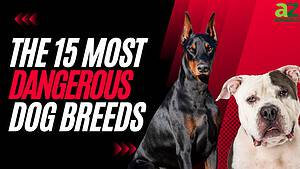While they may look extremely similar upon first glance, there are a great deal of differences between the Samoyed vs American Eskimo dog. But what might some of these differences be, and how can you learn how to tell these two dogs apart?
In this article, we will address all of the similarities and differences between the American Eskimo dog and the Samoyed, including their size differences and physical appearances. We will also address what they were originally bred for as well as their current behavior in the average family home or environment. Let’s get started and talk about these two amazing dog breeds now!
Comparing Samoyed vs American Eskimo Dog
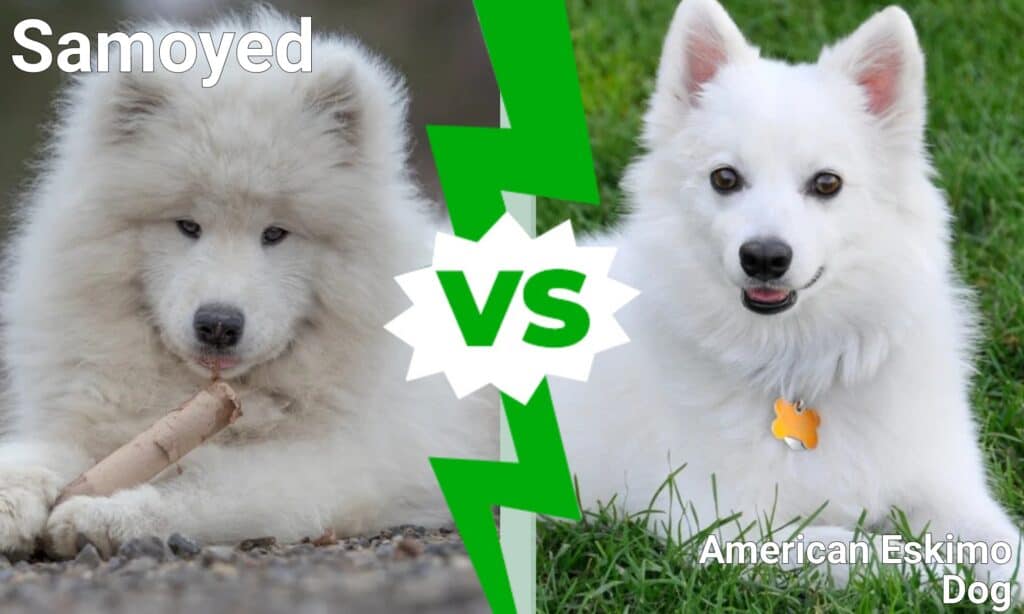
| Samoyed | American Eskimo Dog | |
|---|---|---|
| Size | 21-23 inches tall; 35-65 pounds | 9-19 inches tall; 6-35 pounds |
| Appearance | Only comes in a solid white or cream color; huge and fluffy coat that truly impresses everyone who sees it. Small triangular ears and huge fluffy tail | Only comes in white, with small ears and curled tail. Fluffy coat but not as thick as the samoyed, and has a more slender face |
| Originally Bred For | Hunting and herding reindeer in Siberia; also pulled sleds | Farming and herding, though also used for performing in circuses |
| Behavior | Alert, friendly, and ideal for families with young children. Often extremely stubborn and difficult to train, and can show destructive tendencies if not exercised adequately | Extremely active and energetic; requires ample stimulation and attention or can have serious anxiety or separation issues |
| Lifespan | 12-14 years | 13-15 years |
Key Differences Between Samoyed vs American Eskimo Dog
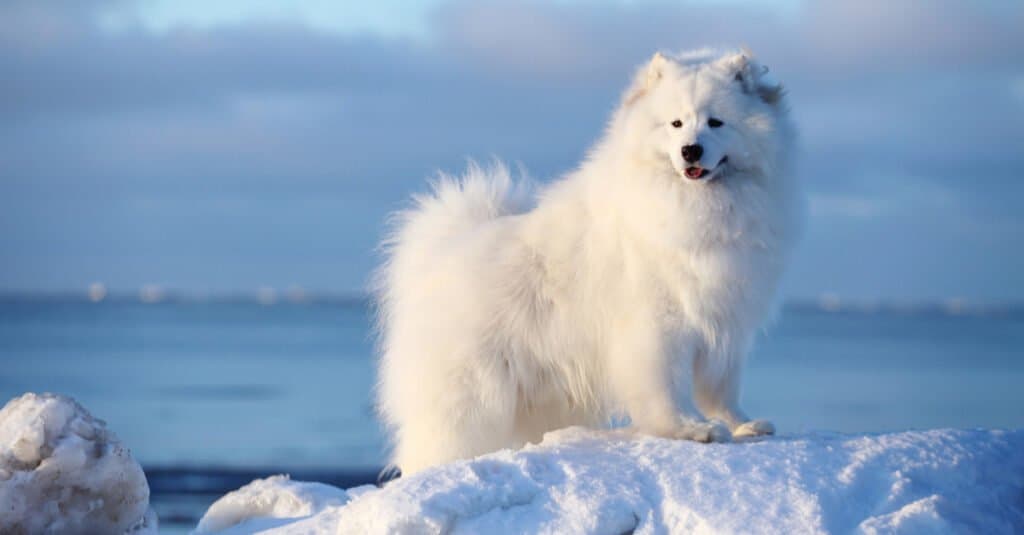
Samoyeds are pack animals.
©Ilya Barmin/Shutterstock.com
There are many key differences between the Samoyed and the American Eskimo dog. The Samoyed is larger than the American Eskimo dog, in both height and weight. While both of these dogs have beautiful white coats, the coat of the Samoyed is thicker than the coat of the American Eskimo dog. Finally, the American Eskimo dog lives a longer life compared to the Samoyed overall.
Let’s discuss all of these differences in more detail.
Samoyed vs American Eskimo Dog: Size
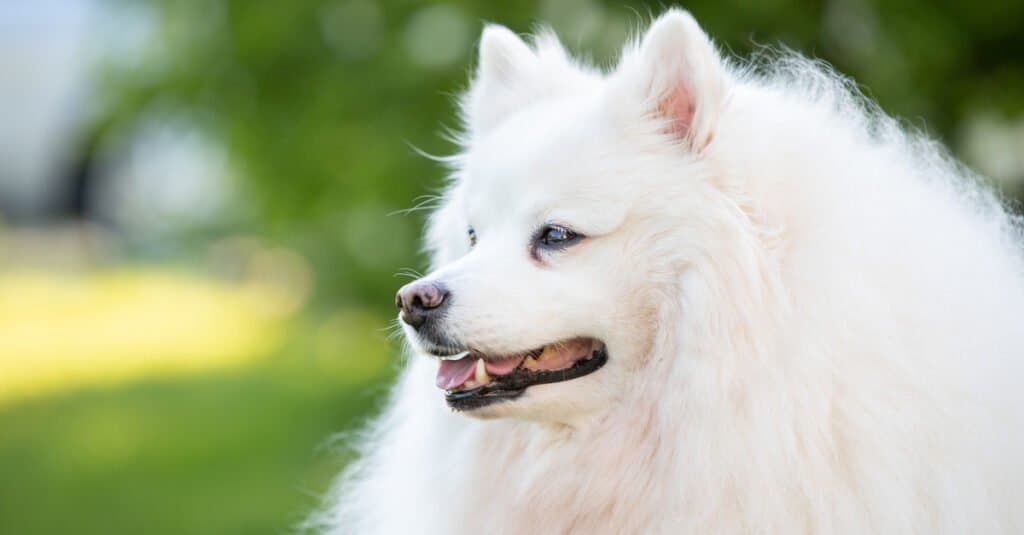
American Eskimo dogs weigh anywhere from 6 to 35 pounds, while Samoyeds weigh an average of 35 to 65 pounds.
©Hendrickson Photography/Shutterstock.com
You can easily tell a Samoyed from an American Eskimo dog when you look at them side-by-side. For example, the Samoyed is much larger than the American Eskimo dog, in both height and weight. Most American Eskimo dogs are considered small to medium dogs, while Samoyeds are typically a large breed. Let’s take a closer look at those figures now.
The American Eskimo dog reaches 9 to 19 inches tall, while the Samoyed reaches 21 to 23 inches tall on average. But that isn’t where their differences end. Given the Samoyed’s taller frame, they also weigh more than the average American Eskimo dog. For example, American Eskimo dogs weigh anywhere from 6 to 35 pounds, while Samoyeds weigh an average of 35 to 65 pounds.
Samoyed vs American Eskimo Dog: Appearance

The average head size of the Samoyed is larger and more round compared to the pointed face of the American Eskimo dog.
©iStock.com/photobac
It can be extremely difficult to tell an American Eskimo dog from a Samoyed, given that they both have fluffy white coats. Both of these dogs only come in white, no other colors or markings are typically present. However, there are some differences in their physical appearance other than their obvious size differences. Let’s take a look now.
The main difference in the physical appearances of these two dogs have to do with the thickness of their coats. For example, Samoyeds have an extremely thick double coat, made for working in freezing environments, while American Eskimo dogs have a single layer fluffy coat. This means that American Eskimo dogs still enjoy cooler climates, but their fur isn’t nearly as thick as Samoyed fur.
However, both dogs have small triangular ears and long snouts. The average head size of the Samoyed is larger and more round compared to the pointed face of the American Eskimo dog. Overall though, it can be extremely difficult to tell these two dogs apart!
Samoyed vs American Eskimo Dog: Original Reason for Breeding
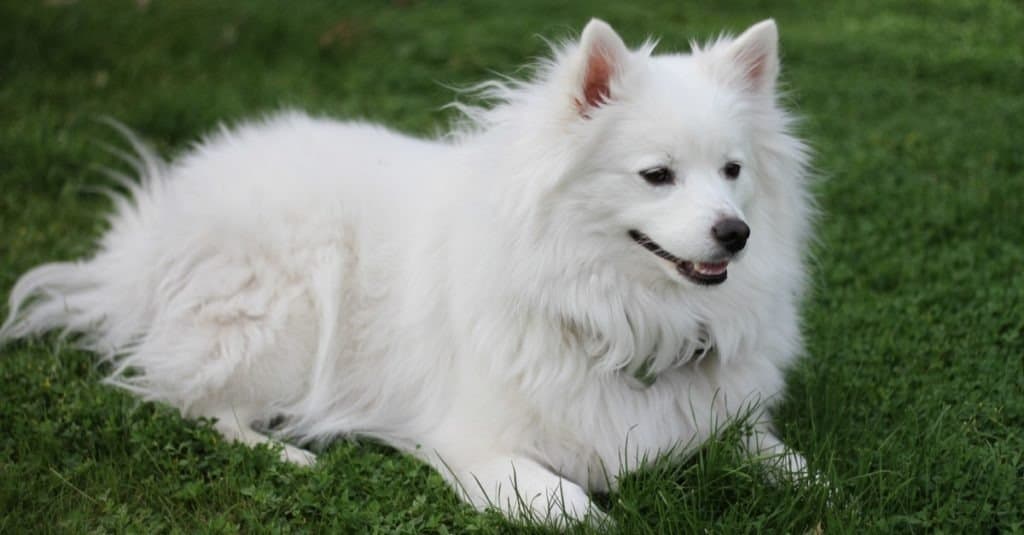
Samoyeds have an extremely thick double coat, made for working in freezing environments, while American Eskimo dogs have a single layer fluffy coat.
©Cameron Archibald/Shutterstock.com
Did you know that the Samoyed and the American Eskimo dog were bred for different reasons originally? Just like the Siberian Husky, the Samoyed was originally bred to pull sleds, while the American Eskimo dog was bred to herd animals and perform farm work. However, the American Eskimo dog was quickly recognized as a natural performer and was used in circus work! Additionally, Samoyeds were used to hunt and herd reindeer, something that American Eskimo dogs were not used for.
Samoyed vs American Eskimo Dog: Behavior

Just like the Siberian Husky, the Samoyed was originally bred to pull sleds, while the American Eskimo dog was bred to herd animals and perform farm work.
©iStock.com/Abramova_Kseniya
There are some behavioral differences between the Samoyed and the American Eskimo dog. For example, Samoyeds are fantastic dogs to have around your family and children, while the American Eskimo dog may be a bit too high energy for a situation like this. Both of these dogs are extremely intelligent and prone to bouts of stubbornness as well as separation anxiety, so their energy levels need to be addressed at all times.
Samoyed vs American Eskimo Dog: Lifespan
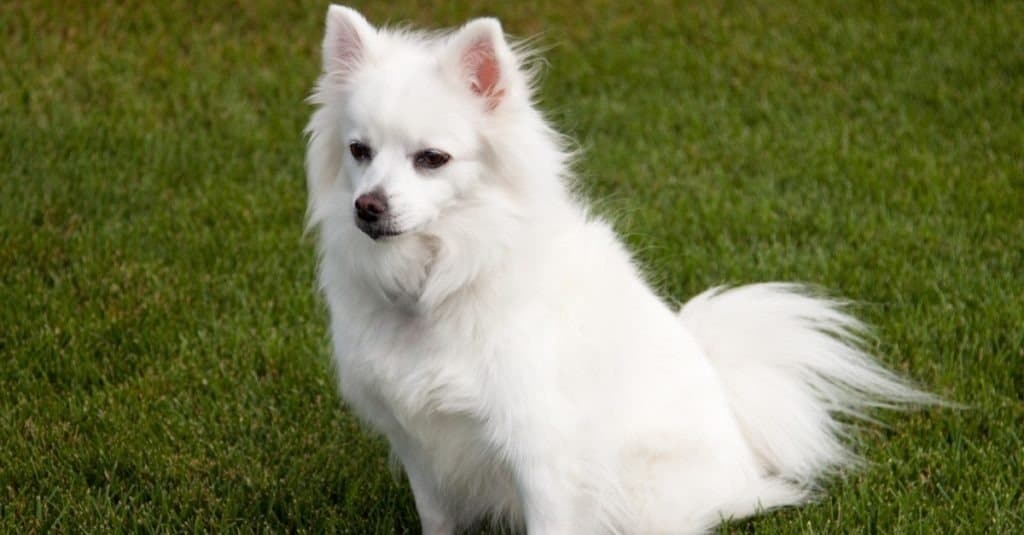
Given that the American Eskimo dog is a smaller dog compared to the Samoyed, it has a longer lifespan.
©Bikenbark/Shutterstock.com
The final difference between the American Eskimo dog and the Samoyed has to do with their lifespans. Given that the American Eskimo dog is a smaller dog compared to the Samoyed, it has a longer lifespan. But by how much? Let’s take a closer look at their average lifespans now.
The Samoyed lives anywhere from 12 to 14 years on average, while the American Eskimo dog lives anywhere from 13 to 15 years. However, it all depends on the care and health of the individual dog that you have. Making sure that your Samoyed or American Eskimo dog gets plenty of exercise and a well-balanced diet is key to a long and happy life!
The photo featured at the top of this post is © Ilya Barmin/Shutterstock.com
Ready to discover the top 10 cutest dog breeds in the entire world?
How about the fastest dogs, the largest dogs and those that are -- quite frankly -- just the kindest dogs on the planet? Each day, AZ Animals sends out lists just like this to our thousands of email subscribers. And the best part? It's FREE. Join today by entering your email below.
Thank you for reading! Have some feedback for us? Contact the AZ Animals editorial team.



